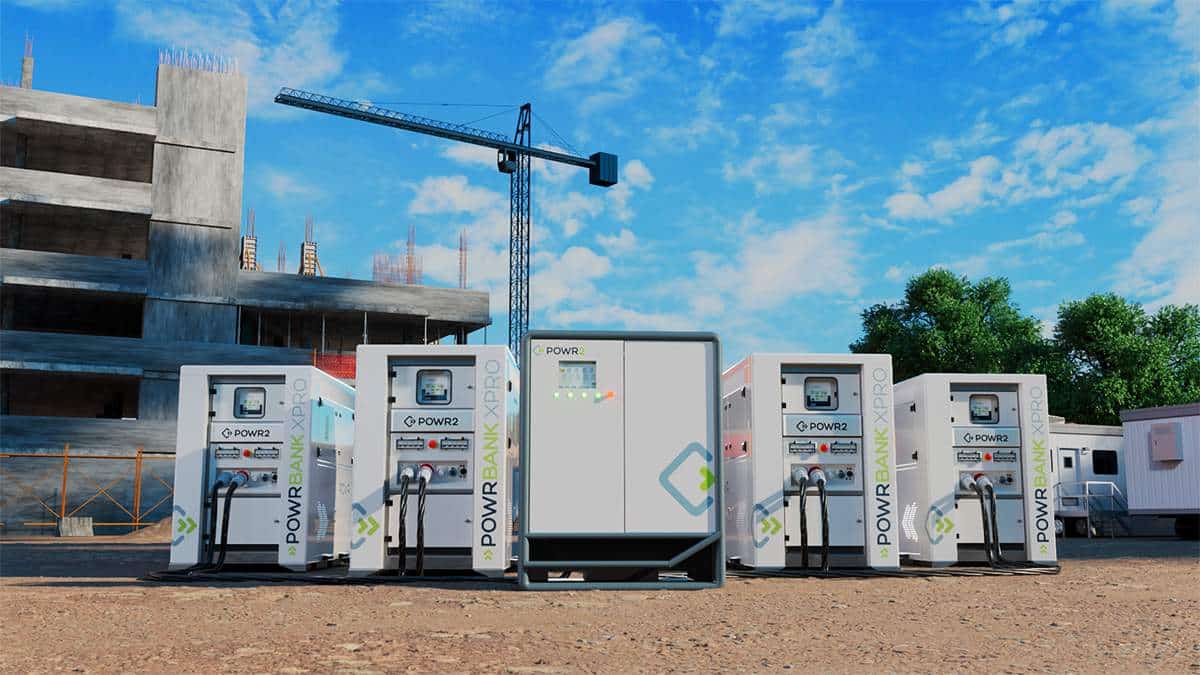Winter Generator Maintenance: Keeping the Power Flowing When It Matters Most

Generators serve as lifelines on the jobsite and during power outages caused by snowstorms, ice and frigid temperatures. That’s why following proper generator winter maintenance is not just a matter of convenience; it’s a necessity to guarantee that this essential backup power source performs when needed. A well-maintained generator has the best chance at a longer life and has greater potential for providing the performance and productivity necessary for getting the job done on time and on budget during the winter.
We’ll explore a comprehensive set of tips and strategies to prepare your generator for the winter months. Whether you rely on a generator for peace of mind during winter storms or for critical operations, these maintenance practices will equip you to face the frosty challenges of the season with confidence.
Before starting any maintenance, prioritize safety. Ensure that the generator is turned off, disconnected from the electrical load and properly grounded. Wear appropriate personal protective equipment (PPE), including gloves and safety goggles.
1. Stick to a Routine Maintenance Schedule
A well-maintained generator follows the manufacturer guidelines for scheduled maintenance. Daily, weekly and monthly generator maintenance includes visual inspection of machine components, such as fluid levels, wiring and hose connections. Because generator use is measured in hours, significant service intervals typically occur at 500 hours, 1,000 hours and 2,000 hours and are repeated every 500 to 1,000 hours after.
Recommended maintenance starting at 500 hours focuses on filter and fluid changes, including the engine oil, oil filter, fuel filter and air filter. While 500-hour maintenance intervals are standard, those are maximum limits and maintenance should be scheduled more frequently for generators operating in harsh environments or challenging weather conditions.
A visual inspection should be conducted on areas that may need extra attention, such as leaks, blocked air inlets and parts that may be susceptible to wear. A simple two-minute inspection could save you one to two hours of downtime.
Run the generator under load. To prevent the generator from becoming dormant and to ensure that all systems are functioning correctly, run the generator under load for a short period. This exercise helps keep the engine, alternator and electrical components in good condition. Monitor the generator’s performance for any unusual noises or issues during this test run.
2. Check Fluids, Filters and Fuels
Follow your manufacturer’s recommendations for the appropriate types of fluids to use in winter conditions. Cold weather can cause fluids to thicken, making it essential to check oil, coolant and fuel levels regularly.
Using winter-grade fuel or adding fuel stabilizers and anti-gelling additives can help prevent fuel from congealing in low temperatures. Keep the fuel tank as full as possible to minimize condensation, which can lead to water contamination in the fuel system.
Airflow can be an issue in colder climates where snowfall can clog or freeze the air inlet grating. When a generator is operating in colder temperatures, a lightweight synthetic oil may be necessary to ensure adequate oil flow to vital engine components, while thicker oil grades are generally used in hot climates to combat thinning oil.
It’s also a good idea to check the concentration of coolant antifreeze in the generator’s cooling system to make sure it can withstand the coldest temperatures in your region without freezing.
One of the best ways to ensure performance is to use genuine manufacturer aftermarket parts. Filters and fluids have been tested during the development of the machine. They have gone through thousands of hours of rigorous testing and will contribute to a long generator life. Using off-brand filters and fluids introduces unknown variables that could affect machine performance as well as equipment warranty packages.
3. Inspect the Battery
Cold temperatures can significantly reduce battery performance. Test the battery voltage and capacity to ensure that it’s in good working condition. Clean the battery terminals to prevent corrosion, and consider using a trickle charger or battery heater to maintain optimal battery health during the winter months.

4. Look Beyond the Engine
Don’t overlook maintenance in areas that aren’t as easy to see. The electrical system is a critical component of the generator but often neglected in maintenance practices. There aren’t many daily checklist activities, but periodic inspection can go a long way toward preventing catastrophic damage and downtime.
Loose or worn wiring can lead to dangerous sparking or electrical short issues. Visually inspect the wiring from the alternator to the control panel; some common electrical problems can be prevented by simply tightening a loose wire, insulating a rubbing hazard, or bending a wire away from a sharp edge.
5. Protect Your Generator From the Elements
Consider installing a generator enclosure or shelter to protect it from snow, ice and extreme cold. Regularly inspect and clear snow and ice from the generator’s air intake and exhaust to prevent blockages that could impede proper ventilation and lead to overheating.
If your generator is equipped with a block heater, use it to keep the engine warm when it’s not running. This helps facilitate easier cold starts and reduces wear on the engine.
6. Visit With a Service Technician
If you encounter any issues, enlist a qualified technician or service provider for inspection and maintenance. A professional service technician can complete preventive maintenance, including inspecting the control panel wiring and removing exhaust blankets in order to tighten exhaust clamps while doing other significant maintenance tasks.
By following these comprehensive winter generator maintenance tips, you’ll be better prepared to weather the cold season and continue to rely on your generator when it matters most. Proper care and maintenance will help ensure that your power source operates reliably and effectively during winter’s harshest conditions.
Remember to keep detailed records of all maintenance activities, including dates, tasks performed and any parts or fluids replaced. Regular winter maintenance will help extend the life of your diesel generator so it operates reliably during the colder months.
Bobby Ranker is product specialist II at Doosan Bobcat North America.




